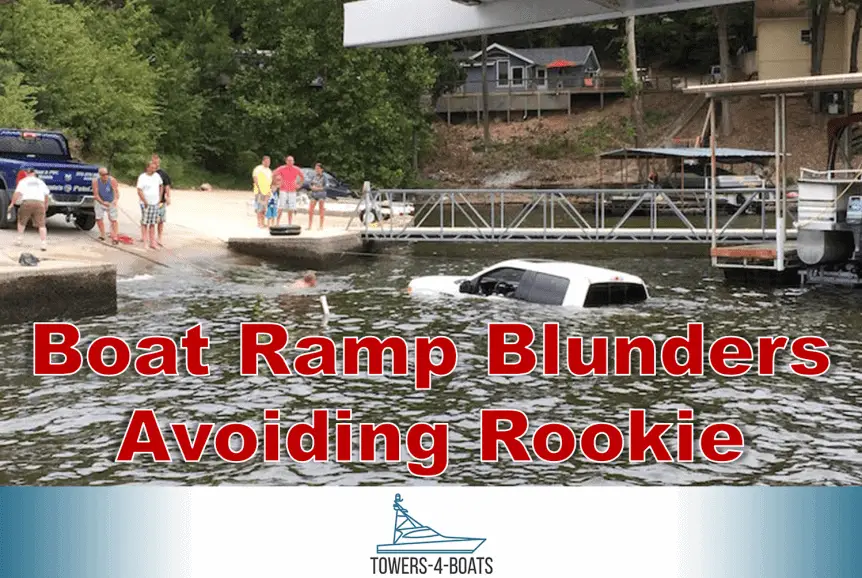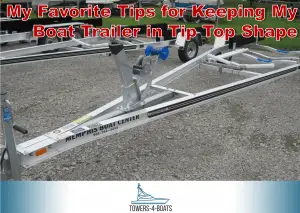How to Avoid Boat Ramp Fails
Launching a boat is tricky business, and can be frustrating. However, proper preparation and care can save you from a humiliating experience. After all, who wants to be the star of a viral video sitting in a truck as it slowly rolls down the ramp and disappears beneath the water.
Here are several tips for launching your boat and avoiding boat ramp mistakes.
Evaluate your tow vehicle
Trailering your boat using a truck or car is not an easy task. Before proceeding with the tow, you have to examine factors such as the maximum weight your vehicle can handle. Carrying too much weight can cause the vehicle to slide and slip down the ramp.
You can always check the tow weight capacity of your vehicle through the capacity sticker that is usually located just inside your door. Otherwise, you can contact the manfacturer. Examine the ball weight it can carry using the user manual for your vehicle. Ball weight levels are also available in a weigh station. Modern trailers available for different tow services come with a builder plate on the chassis of the vehicle.
Preparation
You can eliminate some of the things that make launching complicated with a plan and preparation. Some things to do before launching include:
- Assessing equipment. Ensure that your boat equipment and other necessities such as fuel, working batteries, fenders, and ropes are in proper working condition.
- Following the right launching sequence. Avoid cutting the line, as it will annoy the other people launching their boats. Also, remember to leave enough room for the other drivers to pull up to the ramp as they follow the procession.
- Doing the little tasks that will make your work easier. This includes loosening the straps and undoing the cables to make it easier to undo once you are on the ramp.
Park your Vehicle
Your vehicle is an essential tool when launching your boat. However, failing to park your car can result in the car moving backward into the water when you are trying to start the boat. Putting the car in park while you move to release the boat is advisable.
You should leave your car windows open when parking. This will allow you to easily see and hear any cry for help or alarm before moving to release the boat. The ramps might be slippery, and the vehicle tires might lose traction, so try and maintain the balance of your vehicle.
The last step is to move the boat off the ramp and into the water or sand. In this stage, you have to complete two functions, moving the boat and moving the vehicle out of the way. Make sure that you park away from the ramp so as not to hinder other boats launching on the ramp lane.
Continuous Practice
Do not continuously use the ramp on weekends. These days are forever busy, and finding time to practice is a considerable challenge. Use weekdays for your practice, and it will sharpen how fast you move to launch and park your vehicle without causing other people distress.
Continuous practice will not only enhance your launch efficiency, but it will also help you perfect your act; never again will you experience an audience at the ramp when trying to launch. Each day at the slope will become a comfortable, amazing experience. No more stress!
Get help!
You can have a team to help you launch much faster. A team helps everything run swiftly and smoother in comparison to doing it alone. As you drive and park the car, your group can unfasten the straps, unshackle the boats, and slide it over the ramps. Moving and finding a parking spot for your vehicle becomes more comfortable, and the launching process is more efficient from start to finish.
However, a team might also make things a little more complicated. To combat this, you must ensure that everyone is aware of their job. Failure to communicate and work could result in more damage or a longer, more tedious process.
Have a Plan
Develop a clear plan for your launching process
The simplest launching process involves:
- Assessing the vehicle and ensuring it matches the weight specifications.
- Planning the excursion to the boat ramp, either by yourself with your team.
- Making sure everyone in your team has a specific job and knows what they are doing, and in what order.
- Working as quickly as you can.
Keeping in line with safety measures for your vehicle, boat, and other individuals around the boat ramp and the parking area.
It helps to visit the ramp area and examine the ramps before launching. That way you can avoid simple mistakes and familiarize yourself with the ramp lane and how others in the area launch.
Conclusion
Boating is an open and fun experience. You simply must plan your schedule accordingly so you launch on time and still have plenty of time for your fun on the water.




